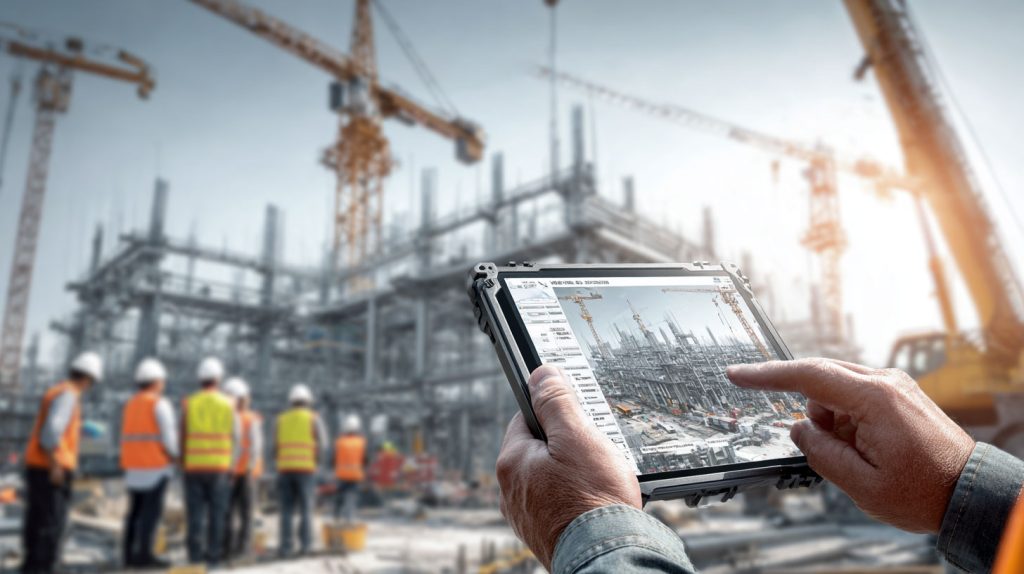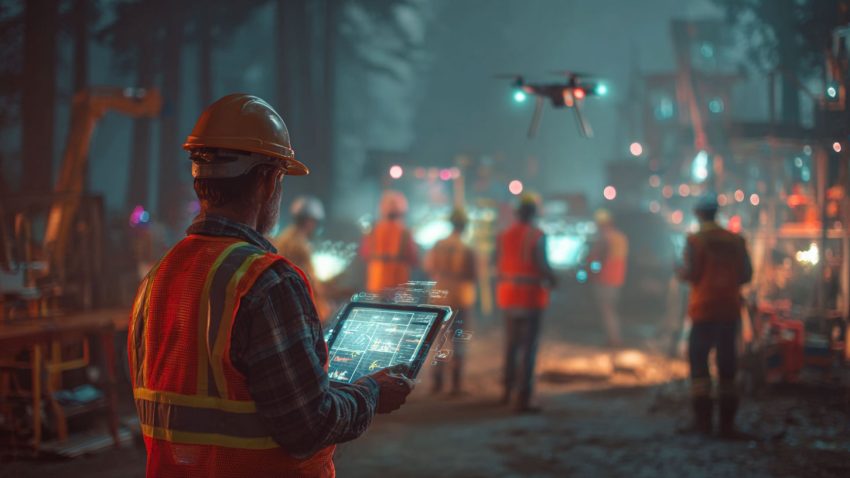How Do Superintendents Use Pre-Task Plans (PTPs) to Keep Crews Safe and Productive on the Jobsite?
Table of Contents:
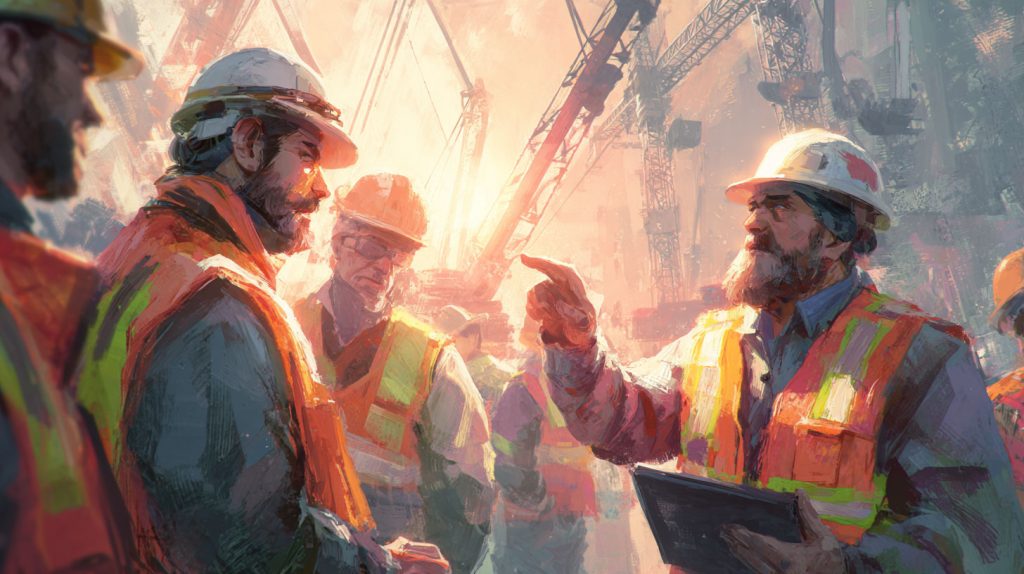
In construction, every day brings a new set of risks. Whether lifting heavy equipment, working at height, or operating in confined spaces, even the most experienced crews need clear guidance to perform safely and efficiently. That’s why Pre-Task Plans (PTPs)—also called Job Safety Analyses (JSAs) or Task Hazard Analyses (THAs)—are so essential. They transform safety from a rulebook into a proactive, daily conversation that protects crews and drives productivity.
A Pre-Task Plan is a structured document that outlines the steps of a specific job activity, identifies potential hazards, and defines the controls or procedures needed to mitigate them. Before work begins, superintendents and crew leaders review the plan with their teams to ensure everyone understands what needs to be done, how it will be done safely, and who’s responsible for each task.
For mission-critical or hyperscale construction projects, where multiple trades work side by side under tight deadlines, PTPs are vital. They keep teams aligned, reduce incidents, and maintain workflow discipline. When used correctly, a PTP isn’t just a form—it’s a communication tool that builds trust and accountability between field crews and site leadership.
In this article, we’ll explore how superintendents use Pre-Task Plans to enhance safety and productivity, what elements make an effective PTP, and how technology like StruxHub is streamlining the entire process with digital workflows and real-time documentation.
What Is a Pre-Task Plan (PTP) and Why Does It Matter?
A Pre-Task Plan (PTP) is the foundation of proactive safety management. It’s a short, structured form completed before each work activity to identify job-specific risks and determine how to perform the task safely and efficiently.
A well-written PTP includes task descriptions, potential hazards, required PPE, and the control measures necessary to eliminate or minimize risks. It’s reviewed in a daily briefing—typically a “toolbox talk”—where the superintendent or foreman leads the discussion.
PTPs matter because they bridge the gap between safety programs and field execution. Instead of relying solely on general safety procedures, crews focus on the specific risks of their work that day. This keeps awareness sharp, fosters communication, and prevents complacency.
Top Benefits
- Reduces jobsite incidents by identifying hazards before work begins.
- Promotes collaboration and clear communication among crews.
- Improves productivity by aligning safety and task efficiency.
Best Practices
- Review PTPs daily and before every new or high-risk task.
- Involve all crew members in the hazard identification process.
- Keep language simple and specific—avoid generic checklists.
Q&A Mini Section
Q: Who prepares the PTP each day?
A: Usually the foreman or competent person, but superintendents review and approve it to ensure accuracy.
Q: How long should a PTP meeting take?
A: Typically 10–15 minutes—it’s a focused conversation, not a lecture.
Q: Why is participation from the crew important?
A: Because workers who identify hazards themselves are more likely to follow safe procedures.
PTPs turn planning into prevention—keeping crews one step ahead of potential risks.
Related Articles
Top Reasons to Switch From Paper Pre-Task Plans to a Digital Construction Safety Platform

How Superintendents Use PTPs to Improve Safety and Productivity
Superintendents use Pre-Task Plans as both a safety tool and a performance strategy. On large jobsites, they can’t be everywhere at once, so PTPs become their “eyes and ears” in the field—helping verify that every task is planned, communicated, and performed safely.
During morning briefings, superintendents review PTPs for high-risk activities like crane lifts, energized work, or hot cutting. They use these discussions to ensure that hazard controls—like barricades, spotters, or lockout/tagout procedures—are in place. This proactive oversight builds consistency across crews and reduces the likelihood of injuries or delays.
PTPs also boost productivity. When teams discuss sequencing, equipment needs, and potential obstacles before work starts, they prevent miscommunication and idle time. Many superintendents encourage foremen to add short efficiency notes to their PTPs—helping identify material staging improvements or coordination adjustments.
Top Benefits
- Creates site-wide consistency in safety communication.
- Helps superintendents monitor task readiness and crew alignment.
- Improves efficiency through pre-planned coordination.
Best Practices
- Conduct spot checks of PTP discussions to ensure engagement.
- Link PTP reviews to daily scheduling or coordination meetings.
- Recognize crews who consistently prepare detailed, effective PTPs.
Q&A Mini Section
Q: How does a PTP save time on the jobsite?
A: By identifying conflicts early, it prevents rework, delays, and material-handling issues later.
Q: Should superintendents personally review every PTP?
A: On large projects, they review high-risk or critical activities, while foremen manage routine tasks.
Q: What’s the biggest mistake in PTP use?
A: Treating it as paperwork instead of a real conversation—participation is what gives it value.
When superintendents lead with PTPs, they set the tone for safety, accountability, and seamless workflow coordination.
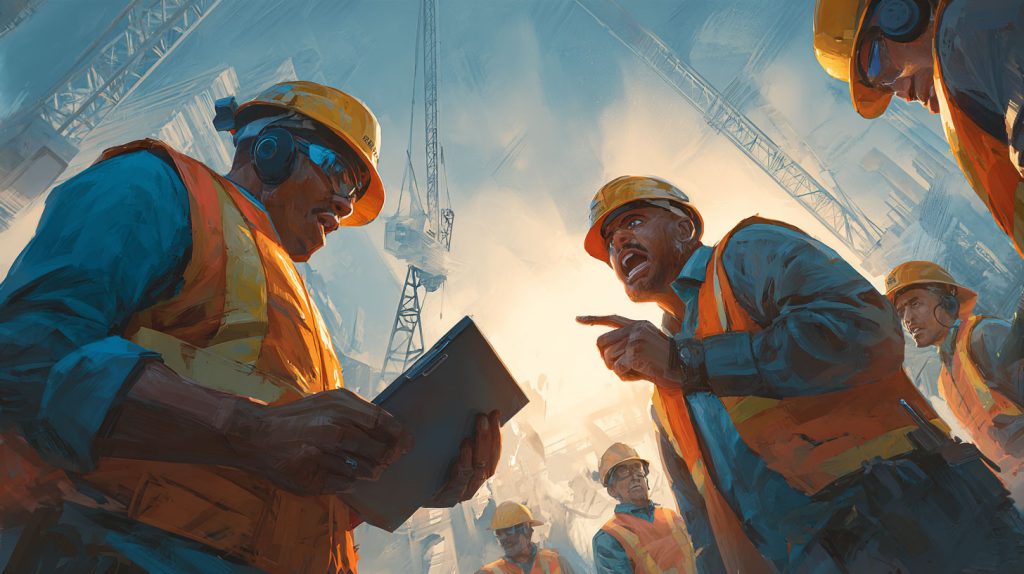
What Makes an Effective Pre-Task Plan?
An effective PTP is clear, concise, and collaborative. It doesn’t just list hazards—it provides solutions. The best PTPs are written in plain language, reference the day’s specific work area, and involve every worker in the conversation.
Key components include:
- Task Description: What the team is doing, where, and how.
- Hazard Identification: All potential risks—physical, environmental, or procedural.
- Control Measures: Steps to eliminate or mitigate each hazard.
- PPE Requirements: Equipment needed for protection.
- Team Sign-Off: Verification that every worker reviewed and understood the plan.
Digital PTPs take this further by integrating photos, maps, and previous day’s observations. When accessible via mobile devices, crews can reference them throughout the shift and add updates on the fly.
Top Benefits
- Clarifies responsibilities and safe work expectations.
- Strengthens documentation for compliance and audits.
- Encourages continuous learning and hazard awareness.
Best Practices
- Include visual aids like site maps or annotated images.
- Keep PTPs updated as conditions change during the day.
- Review completed PTPs during end-of-day debriefs to identify lessons learned.
Q&A Mini Section
Q: How specific should a PTP be?
A: Very specific—general statements like “work safely” don’t help. Detail the exact hazards and controls for that activity.
Q: Should PTPs be reused?
A: Only if the task, crew, and site conditions are identical; otherwise, rewrite or adjust them.
Q: How do digital PTPs improve accountability?
A: They record time stamps, signatures, and updates automatically, creating a verifiable audit trail.
An effective PTP is more than paperwork—it’s a dynamic tool that evolves with the work and keeps safety and performance in sync.
Related Articles
How Digital Tools Are Transforming Pre-Task Planning
Digital transformation has reached every corner of the construction industry, and Pre-Task Plans are no exception. Paper PTPs are giving way to mobile-based systems that simplify documentation, enhance visibility, and ensure every crew is aligned in real time.
With digital tools, superintendents and safety managers can review, approve, and archive PTPs directly from the field. Crew leaders can attach site photos, mark hazard zones, and update safety controls on tablets or smartphones. This eliminates the hassle of lost paperwork while creating a live, searchable database of daily job activities and safety measures.
AI and analytics add even more value. By tracking PTP data across weeks or months, these systems can identify recurring hazards or at-risk behaviors. This insight helps safety leaders adjust training or modify workflows before issues escalate.
Digital PTPs also improve communication between crews and management. Everyone—from the superintendent to the newest laborer—can access the same plan, review updates instantly, and confirm compliance through electronic signatures.
Top Benefits
- Provides real-time access to active PTPs for all project stakeholders.
- Improves compliance tracking and reduces administrative work.
- Uses analytics to detect trends and recurring jobsite risks.
Best Practices
- Standardize digital PTP templates across all trades.
- Require electronic signatures before work begins.
- Use analytics dashboards to guide weekly safety discussions.
Q&A Mini Section
Q: How do digital PTPs save time for field teams?
A: They replace manual paperwork with instant approvals and updates that sync across devices.
Q: Can AI analyze PTPs?
A: Yes—AI can spot patterns in recurring hazards and recommend training or procedural improvements.
Q: How do digital PTPs improve recordkeeping?
A: All plans are stored securely in the cloud, creating an auditable history of safety actions and approvals.
Digital PTPs turn routine documentation into an intelligent system for continuous safety improvement.
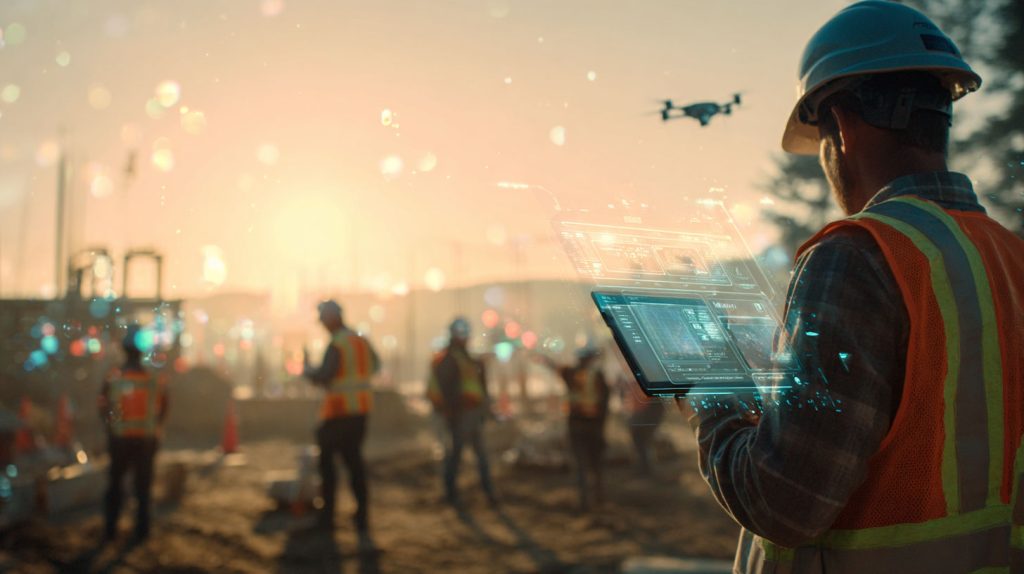
StruxHub
Experience the power of StruxHub today and witness firsthand how it can revolutionize your construction operations.
How Superintendents Use PTPs to Engage Crews and Build Ownership
The most effective Pre-Task Plans aren’t just written—they’re discussed. Superintendents use PTPs as opportunities to build engagement and ownership among their crews. When workers actively participate in identifying hazards and defining safe practices, they take greater responsibility for their own safety and productivity.
Superintendents encourage foremen to lead PTP conversations rather than simply reading forms aloud. This interactive approach promotes situational awareness and allows workers to share real-world insights. For example, an operator might point out a changing surface condition or a rigging concern that wasn’t on the original form.
PTPs also serve as team-building moments. When crews gather to discuss safety before starting work, they build communication habits that carry into their daily operations. Over time, this engagement creates a culture where workers don’t just follow safety protocols—they drive them.
Top Benefits
- Increases worker engagement and accountability.
- Encourages collaboration and open communication.
- Strengthens safety culture through shared decision-making.
Best Practices
- Treat PTP meetings as two-way discussions, not lectures.
- Recognize crews that identify and resolve potential hazards.
- Document suggestions and feedback for continuous improvement.
Q&A Mini Section
Q: How do PTPs improve communication?
A: They create a structured space where crews and supervisors can discuss daily risks and expectations openly.
Q: Why is crew participation important?
A: Because workers who contribute to hazard planning are more invested in following the controls they helped create.
Q: Can PTPs help improve morale?
A: Yes—when workers feel heard and included, trust and motivation increase across the jobsite.
Superintendents use PTPs not just to manage risk—but to empower crews to become proactive partners in safety and performance.
How Pre-Task Plans Strengthen Coordination Between Trades
On mission-critical projects, multiple trades often share the same work areas—electricians, welders, HVAC crews, and rigging teams all performing parallel operations. PTPs help superintendents coordinate these overlapping activities by ensuring every trade understands both their own hazards and those of others working nearby.
During daily coordination meetings, superintendents review upcoming PTPs to identify potential conflicts. For instance, a mechanical crew using lifts might overlap with electricians performing overhead conduit work. By reviewing each trade’s PTPs together, leadership can adjust schedules, assign spotters, or establish temporary barriers to maintain safety and productivity.
Digital systems make this process even smoother. Shared dashboards allow all trades to upload PTPs in one platform, giving the superintendent and safety team full visibility. This not only reduces risk but also promotes collaboration and mutual respect among crews.
Top Benefits
- Prevents trade interference and overlapping hazards.
- Enhances cross-team awareness of worksite conditions.
- Reduces downtime by aligning daily priorities and resources.
Best Practices
- Review all active PTPs during morning coordination meetings.
- Encourage trades to share hazard information across teams.
- Use a shared digital platform to centralize PTP management.
Q&A Mini Section
Q: Why should trades share their PTPs?
A: Because coordination depends on mutual awareness—knowing others’ activities prevents cross-trade hazards.
Q: Can overlapping trades share one PTP?
A: In some cases, yes—joint PTPs can improve collaboration for shared tasks.
Q: How do PTPs help reduce scheduling delays?
A: They help identify conflicts early, allowing superintendents to adjust sequences before issues arise.
By connecting PTPs across trades, superintendents turn daily planning into a powerful coordination tool that keeps mission-critical projects efficient and safe.
How StruxHub Helps Superintendents Manage and Streamline Pre-Task Plans
Managing dozens—or even hundreds—of PTPs across a large hyperscale project can overwhelm traditional systems. That’s where StruxHub delivers a major advantage. Designed for mission-critical construction coordination, StruxHub digitizes and centralizes Pre-Task Plan workflows, helping superintendents maintain full visibility and compliance in real time.
Crews can create and update PTPs directly from the field using StruxHub’s mobile interface. Photos, comments, and crew sign-offs are instantly synced to the cloud. Superintendents can review and approve PTPs from anywhere, ensuring all high-risk activities have been planned and verified before work begins.
The platform also integrates with scheduling and safety modules, linking each PTP to specific zones or project phases. AI analytics highlight recurring hazards, measure crew participation rates, and generate reports for compliance audits. This level of visibility helps superintendents save time, strengthen accountability, and build a proactive safety culture.
Top Benefits
- Digitizes and centralizes all Pre-Task Plan documentation.
- Links PTPs to schedules, safety data, and field reports.
- Provides AI-driven insights into hazard trends and participation metrics.
Best Practices
- Require crews to submit digital PTPs through StruxHub before each shift.
- Use the analytics dashboard to track completion and quality.
- Review weekly hazard summaries to update safety training programs.
Q&A Mini Section
Q: How does StruxHub improve PTP efficiency?
A: It eliminates paper forms, speeds up approvals, and makes documentation instantly accessible.
Q: Can StruxHub integrate with safety tracking systems?
A: Yes—it connects PTPs to safety reports and inspection data for full visibility.
Q: What’s the biggest benefit for superintendents?
A: Real-time control—StruxHub gives leaders oversight of every crew’s plan, risk, and readiness.
StruxHub transforms Pre-Task Planning from an administrative requirement into a living, collaborative system that protects crews and streamlines daily operations.

FAQ
What is the main purpose of a Pre-Task Plan (PTP) in construction?
The main purpose of a Pre-Task Plan (PTP) is to identify potential hazards before work begins and establish safe, efficient methods to complete the task. It’s a proactive safety tool designed to help crews understand their responsibilities, the risks associated with their work, and the controls required to eliminate or minimize those risks.
Unlike generic safety manuals, PTPs are task-specific. They focus on the day’s activities, the location, and the equipment being used. This level of detail ensures that safety measures are relevant and immediately actionable. Superintendents and foremen use PTPs to guide daily discussions, reinforcing awareness and teamwork among crew members.
PTPs also enhance productivity. By reviewing steps, resources, and potential obstacles in advance, teams work more smoothly with fewer interruptions. When workers clearly understand the plan, they make better decisions in the field, reducing downtime and rework.
In short, the PTP is both a communication and prevention tool. It ensures every worker starts the day informed, equipped, and mentally prepared for the task ahead—making it one of the most effective ways to keep jobsite operations safe and productive.
How often should crews complete a Pre-Task Plan, and who is responsible for it?
Crews should complete a Pre-Task Plan every day before starting work and whenever a new task or condition arises. If weather changes, equipment is replaced, or crews move to a different area, a new PTP should be developed to reflect updated hazards and procedures.
Responsibility for preparing the PTP typically falls on the foreman or competent person leading the task. However, the superintendent or safety manager reviews it to ensure accuracy and completeness—especially for high-risk activities like crane operations or energized electrical work.
The process should never be treated as a box-checking exercise. The most effective PTPs are collaborative, involving input from every crew member. Workers who contribute to identifying hazards are more likely to follow safety protocols and spot potential issues during the shift.
Digital tools make this easier by allowing crews to complete and submit PTPs electronically, with real-time oversight from superintendents. Whether done on paper or through platforms like StruxHub, the goal remains the same—to promote active communication and continuous awareness.
How do Pre-Task Plans improve communication and teamwork on the jobsite?
Pre-Task Plans act as a daily communication bridge between field crews, foremen, and superintendents. Instead of assuming everyone knows the day’s priorities, the PTP creates a structured conversation about task steps, safety measures, and expected outcomes.
During PTP meetings—often called toolbox talks—supervisors discuss the scope of work, review hazards, and assign responsibilities. These discussions break down barriers between trades, ensuring everyone understands how their work impacts others. For example, if electricians are working near mechanical teams, the PTP highlights spatial and timing conflicts before they occur.
By including the crew’s input, PTPs build teamwork and engagement. Workers gain ownership over safety because their insights directly influence the plan. This engagement improves morale, fosters accountability, and encourages workers to look out for one another.
In large mission-critical projects, this daily dialogue helps maintain consistency across shifts and subcontractors. Everyone begins the day aligned under the same expectations, keeping both safety and productivity on track.
StruxHub
Discover how StruxHub can revolutionize your construction management. Contact us today!
What are the most common mistakes teams make when completing PTPs?
The most common mistake is treating the PTP as a formality rather than a living document. When crews rush through the process or copy the same hazards daily, the plan loses value. Each PTP must reflect the specific conditions of the work being performed.
Another mistake is poor engagement. If the discussion feels one-sided—led only by a supervisor without crew input—workers may not internalize the plan. Superintendents should encourage participation by asking open-ended questions like, “What hazards do you see today?” or “What could go wrong here?”
Incomplete documentation is another issue. Missing signatures, generic hazard lists, or outdated information can create compliance risks. These gaps also make it difficult to prove due diligence in the event of an incident.
Digital solutions solve many of these problems. By requiring field input and automating sign-offs, tools like StruxHub ensure every PTP is current, complete, and verified. The key to success is commitment: when crews treat PTPs as meaningful safety conversations, not paperwork, they prevent accidents before they happen.
How does StruxHub help superintendents manage Pre-Task Plans more effectively?
StruxHub simplifies Pre-Task Planning by digitizing the entire process—from creation to approval. Instead of collecting paper forms, superintendents can review, edit, and approve PTPs directly from their dashboard or mobile device.
Crews can create PTPs in the field using preloaded templates that guide hazard identification and control selection. They can attach photos, mark specific locations, and gather crew signatures electronically. Once submitted, the superintendent receives instant notifications for review.
The platform’s analytics tools track completion rates, identify recurring hazards, and generate safety performance reports automatically. This visibility helps safety teams spot trends and prioritize training or corrective action. StruxHub also integrates with scheduling and inspection modules, linking each PTP to related work areas and tasks.
By streamlining communication, documentation, and analysis, StruxHub turns Pre-Task Plans into a powerful management system. Superintendents gain the oversight they need to keep jobsites compliant, engaged, and productive—without slowing down the pace of work.

